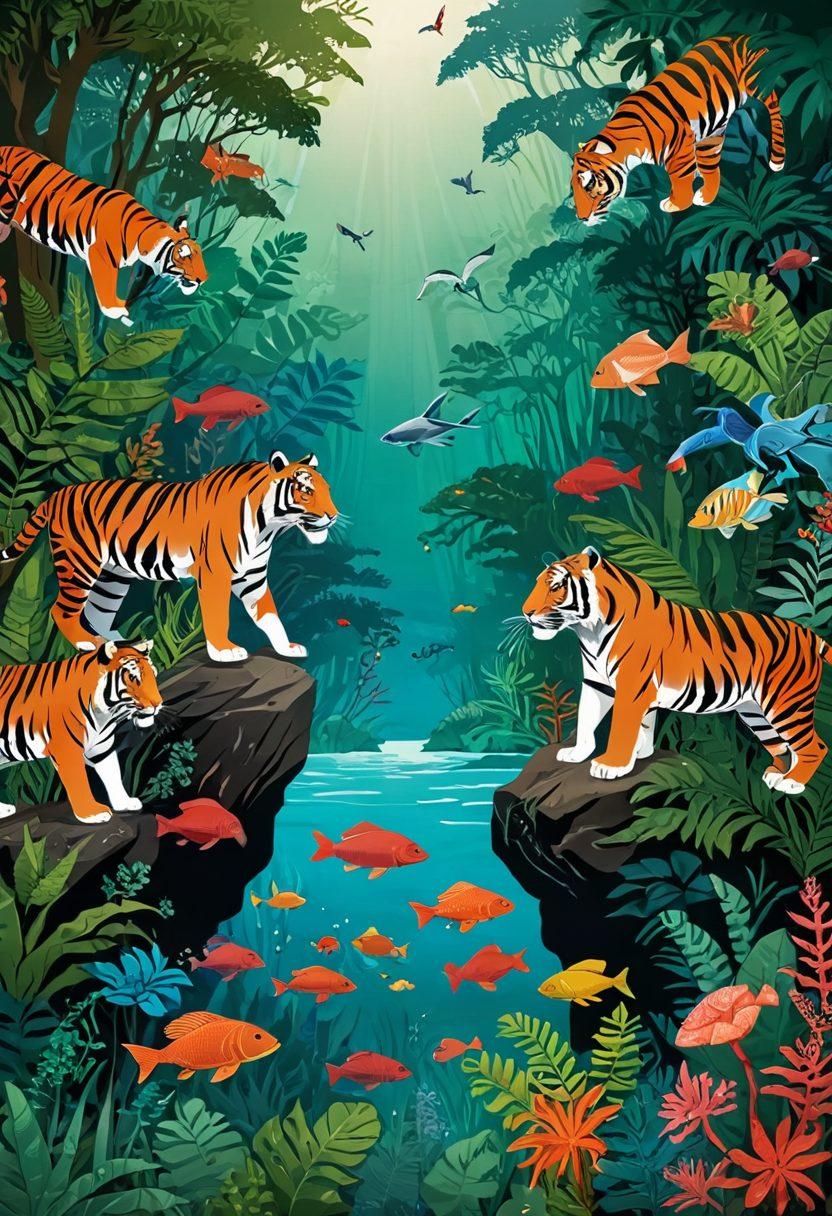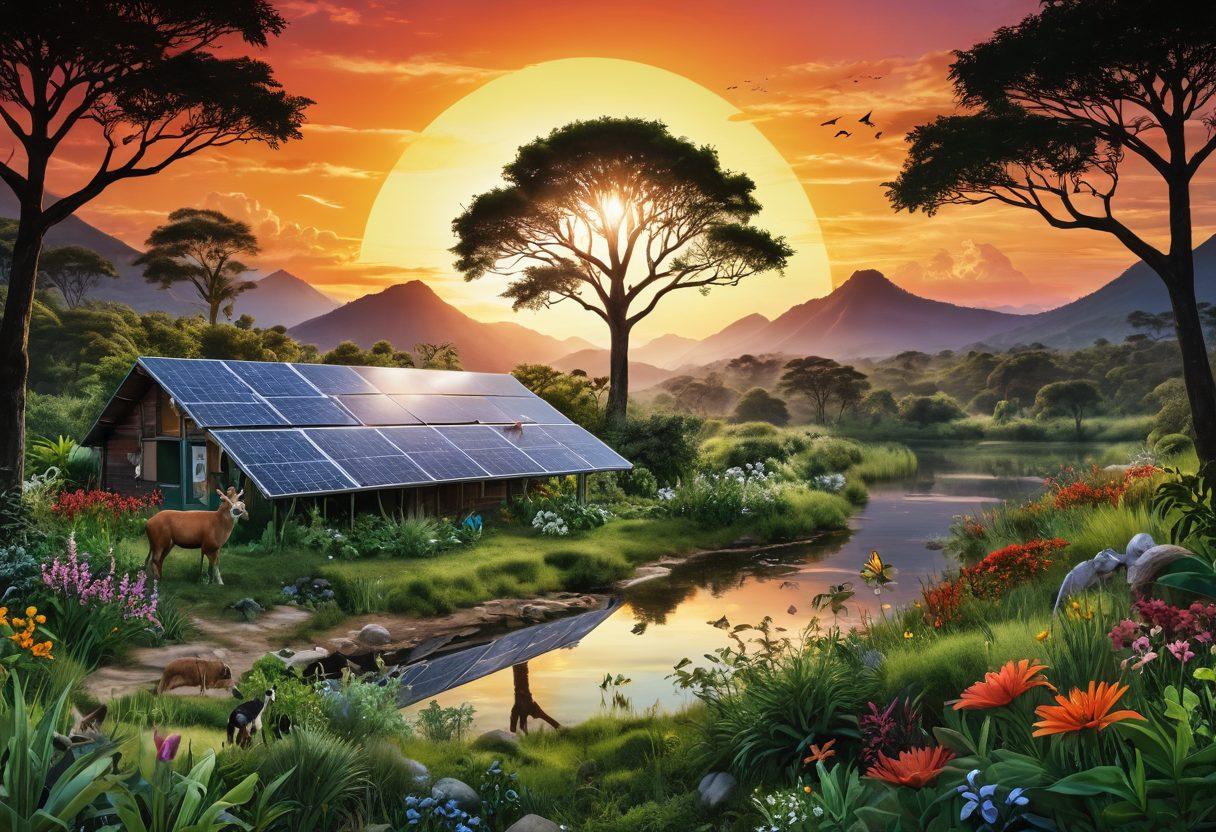Empowering Biodiversity: The Crucial Role of the IUCN Red List in Global Conservation Efforts
The IUCN Red List shines as a beacon of hope in a world teetering on the brink of ecological collapse. As we grapple with the consequences of climate change, habitat destruction, and rampant urbanization, the role of the IUCN Red List becomes increasingly vital. This meticulously compiled catalog of threatened species acts as both a warning signal and a guide, illuminating the path for biodiversity conservation efforts across the globe. Have you ever pondered the intricate tapestry of life that surrounds us? Each thread represents delicate ecosystems, and the IUCN Red List is pivotal in ensuring these threads do not fray beyond repair.
When we speak of the IUCN Red List, we're not merely discussing a catalog; we're diving into an extensive resource that assesses species vulnerability and provides a framework for endangered species protection. Imagine a world without majestic elephants roaming the savanna or vibrant coral reefs teeming with marine life. Such a scenario is not far-fetched if we neglect the imperative of species evaluation. The list serves as a clarion call for conservation biology, bringing attention to threatened species and advocating for habitat conservation to safeguard these creatures. Indeed, how can we protect what we cannot see?
Furthermore, the impact of the IUCN Red List transcends mere preservation; it acts as a catalyst for action. Countries and organizations worldwide use this tool to guide their conservation initiatives, implement sustainable practices, and foster biodiversity management. Every entry on the list represents not just a species, but also a unique story of survival against the odds. As the IUCN Red List evolves, it encourages ecological studies that reveal the interconnectedness of species, which plays a profound role in environmental sustainability. After all, can we afford to let nature's storytellers fade into oblivion?
In our fast-paced lives, it’s easy to forget that protecting wildlife is a shared responsibility. The IUCN Red List invites us into this endeavor, urging individuals and communities to engage in habitat restoration and species monitoring. When we take steps to engage in wildlife protection, we’re not just beneficiaries—we are custodians of our planet’s future. It’s time to ask ourselves: what small actions can we take to contribute to nature preservation? From participating in local conservation programs to supporting sustainable products, every effort counts towards extending the lifeline of our ecosystems.
In conclusion, embracing the IUCN Red List is crucial not only for individual species but for the rich tapestry of life we all depend on. As we stand at the crossroads of decision-making, let us remember that each of us holds a piece of the puzzle in fighting against extinction. By actively engaging in global conservation efforts, we harness the power of informed action, ensuring that the flora and fauna conservation priorities of today pave the way for a sustainable tomorrow. So, let’s rally together, draw inspiration from the IUCN Red List, and protect the delicate balance of life that unites us all.
From Assessment to Action: How the IUCN Red List Drives Global Biodiversity Conservation Initiatives
Have you ever paused to wonder how many species are teetering on the edge of extinction right now? The IUCN Red List stands as a critical beacon illuminating the status of the world's flora and fauna. Acting as a comprehensive inventory, it assesses the conservation status of plant and animal species, driving global biodiversity conservation initiatives. But it is more than just a list; it represents a powerful call to action for all of us. As biodiversity continues to decline, the urgency of the situation is palpable – the IUCN Red List could very well be the lifeline for endangered species and a roadmap for sustainable practices in conservation efforts.
Imagine a world where vibrant ecosystems flourish, teeming with life. This vision relies heavily on the IUCN Red List's ongoing efforts in species evaluation and monitoring. By leveraging ecological studies and scientific research, the Red List identifies threatened species and provides invaluable insights into the factors jeopardizing their survival. As a result, policymakers, NGOs, and passionate wildlife enthusiasts alike can craft targeted strategies for habitat conservation and restoration, striving to revive endangered species protection initiatives.
The heart of the IUCN Red List's mission beats strongest in its role in fostering international collaboration. It's not just about recognizing endangered species; it’s about galvanizing action. Organizations worldwide utilize this vital tool to promote biodiversity management and allocate resources effectively. Imagine joining forces across borders, sharing knowledge, and innovating methods for wildlife and habitat protection—these collaborations are precisely how the Red List catalyzes global conservation efforts. What would happen if everyone committed to a shared goal of species and ecosystem protection?
Intriguingly, the narrative of the IUCN Red List is like a tapestry woven with diverse threads—individual stories of resilience, loss, and recovery. Consider the tale of the California condor, once thought extinct in the wild, now flying again thanks to comprehensive species monitoring and habitat restoration efforts informed by the Red List. Such success stories inspire action and hope, propelling the conservation biology community to tackle even the most daunting challenges in environmental sustainability. Wouldn't it be prudent for us to learn from these triumphs and apply those lessons?
In conclusion, the IUCN Red List is not merely an inventory of our planet’s species; it serves as our collective conscience, urging us towards greater environmental preservation. Each entry brings a heartbeat, reminding us of our responsibility to protect nature’s myriad forms. Whether through advocating for wildlife protection, supporting habitat conservation projects, or committing to sustainable practices in our own lives, every effort counts. How will you contribute to this grand narrative of biodiversity conservation? The call to action is real, and it begins with each of us stepping up to safeguard our precious ecosystems.
Building a Sustainable Future: The Impact of the IUCN Red List on Ecosystem Health and Habitat Restoration
Imagine standing in a lush rainforest teeming with wildlife, sunlight streaming through the canopies, filling the air with vibrant sounds of nature. Now, picture that same place barren, silent, replaced by a stark landscape devoid of life. This contrast serves to highlight one of the most pressing issues of our time: the loss of biodiversity. The IUCN Red List, a critical tool in biodiversity conservation, plays an essential role in global conservation efforts, facilitating habitat restoration and ensuring the ecological balance necessary for a sustainable future. But how does this list influence our planet’s intricate web of life?
The IUCN Red List, with its meticulous species evaluation, informs us about the conservation status of various flora and fauna. It acts as a barometer for the health of our ecosystems. When we see a species classified as 'endangered' or 'critically endangered', it is a clear signal that immediate action is necessary. The Red List does not merely identify the problem; it galvanizes the global community to engage in targeted conservation efforts. "We don't inherit the earth from our ancestors, we borrow it from our children," as the saying goes, emphasizing the importance of safeguarding our planet for future generations.
Fortuitously, the IUCN Red List doesn’t just serve as an alarm bell for threatened species; it also provides actionable insights for habitat conservation and restoration. By harnessing ecological studies and species monitoring, conservationists can tailor strategies that revitalize ecosystems in distress. Consider the case of the California condor—once on the brink of extinction, collaborative efforts supported by the information from the Red List have played a key role in its gradual recovery. Stories like these illuminate the path towards effective wildlife protection and habitat restoration, invigorating the discourse on environmental sustainability.
But why is it imperative for every individual to be invested in biodiversity management? Think about it: every species, no matter how small, plays a role in our ecosystems, contributing to their health and balance. The loss of even one species can trigger a domino effect, leading to habitat destruction and the collapse of entire ecosystems. Each person has the potential to make a difference—whether it’s advocating for endangered species protection, engaging in sustainable practices, or supporting local conservation initiatives. Recognizing our interconnectedness with nature is vital to overall ecosystem protection.
As we navigate the complexities of climate change and other environmental threats, the IUCN Red List is not just a database—it’s a call to action. By investing in biodiversity conservation and prioritizing habitat conservation, we are building a sustainable future. The choice is ours: are we going to be the architects of our destruction or the stewards of nature’s legacy? Through informed actions and engaged communities, we can ensure the continued survival of our planet's incredible diversity. Let's embrace the challenge, because our planet—and the multitude of life it harbors—deserves our unwavering commitment to conservation.


